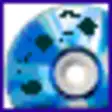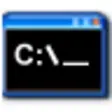Used TortoiseCVS for Windows?
Editors’ Review
CVS, aka the Concurrent Version System, lets software developers access a centrally maintained project via a client-server architecture, which helps keep versions under control. TortoiseCVS is a free CVS client that integrates itself into the Windows shell with context menu entries as well as tortoise icons identifying all CVS-controlled files. It replaces the command-line CVS interface and lets you view and edit CVS-controlled files from inside Windows Explorer. The program's name and mascot play on the Windows shell association (the mascot even has a name, Charlie Vernon Smythe), which is fairly unique to TortoiseCVS, since most CVS clients run in their own windows.
Though TortoiseCVS does its thing from inside Windows, its Start Menu folder offers not only user's guides in several languages but also accesses the program's tabbed Preferences page. This dialog let us set basic operational parameters such as icon overlays, program policies, and editing options; configure tools like the Diff, Merge, and SSH applications; clear the program's caches; set ignored files; and even configure icon options and font colors for various file types. The User's Guide is in the form of a searchable Windows Help file; it does a terrific job of explaining not just the program but also the basics of CVS. To use TortoiseCVS, you "check out" a "sandbox," a local copy of project files. You make changes to the sandbox and "Commit" them to the file repository. Many open source projects let users check out anonymous read access copies of project files. This is a great way to check out TortoiseCVS, too, though you don't even need a server, thanks to the program's modular architecture. To create a personal repository, we simply created a folder with version-controlled files, right-clicked it, selected Make New Menu and locally mounted repository protocol, confirmed the selection, and clicked OK. After that, we could access our files under CVS.
So how does TortoiseCVS work? Pretty well, but then the basic program has been in use since 2000, so it's both robust and refined. The tabbed dialog views are easy to navigate, with check boxes, drop-down lists, and clearly labeled entry fields, and the color-coded text simplifies differentiating data. Its modular environment provides great flexibility, letting users keep open just what they want and where they want it. There's lots of information and support online for new users, too.
Explore More
Extension Renamer
Free
File Text Finder
Free
Recover - Drive and Data Recovery
Trial version
Dead Disk Doctor Plus
Trial version
Find Files Containing Your Specified Text Software
Trial version
Name Dropper
Free
TimeTraveler (64-bit)
Trial version
MQ File Mover
Trial versionRE_DirSync
Trial versionEasy Files Manager
Trial versionSplitIt System
Free
Rename Multiple Files At Once Software
Trial version